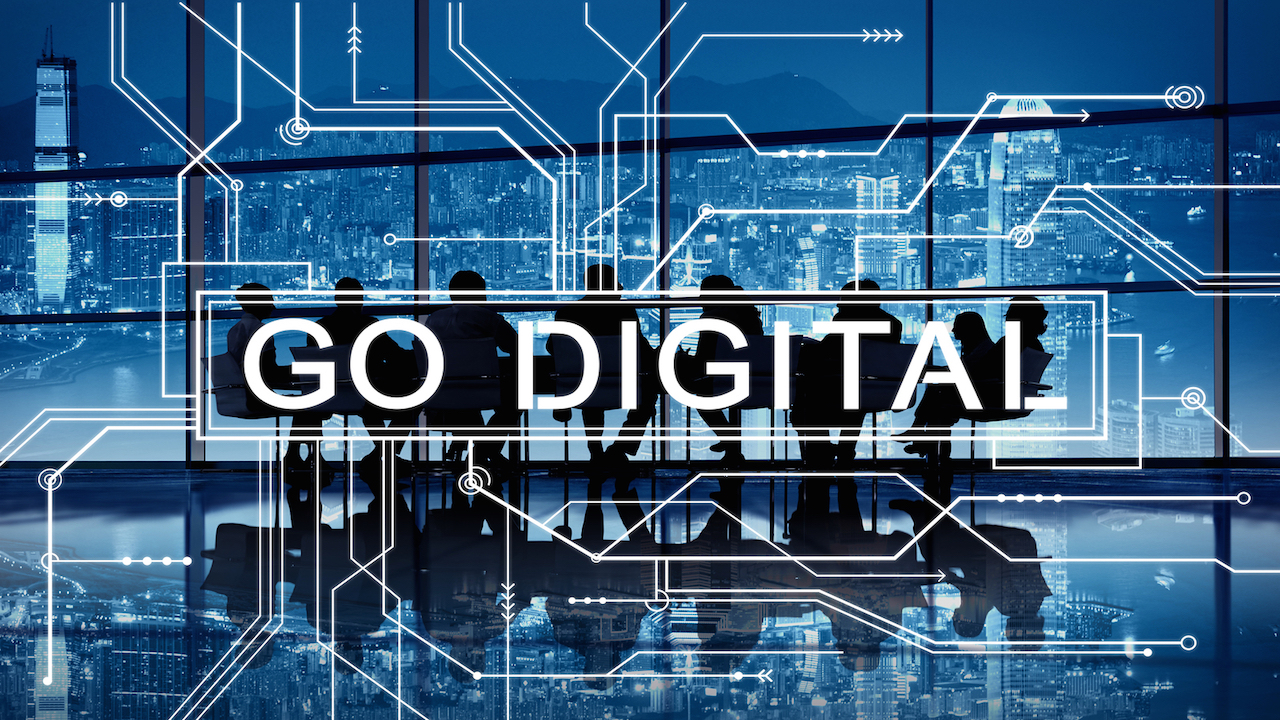The IT Director's guide to simplifying tech and making friends with the business
Getting users on side is half of the battle when it comes to IT and, in particular, moving to the cloud

Choosing a career as an IT manager/director can be isolating. The business doesn't like you they see you as a barrier to their achievement and other tech coherts don't care about what you're trying to do either as they're much more focused on bigger and wider transformational efforts and don't quite see where and how you fit in. It's really tough.
IT vs the rest of the world
Those working in IT are often painted as the villains of the piece. The baddie, the blocker, the crusher of productivity and creative dreams It can be a very hard existence for those working in tech and can very often feel like it's you versus the rest of the world, with the revolt being led from within your own business.
But it doesn't have to be like that. Your knowledge, insight and skillset are all very valid and there is a way to amplify your voice and cement your presence.
Just imagine a world where the business units and IT team are pulling in the same direction rather than pushing one another away? Imagine the possibilities in that world of positivity and unison rather than negativity and division.
Moving from theory to reality here is entirely possible. But, it's important to note up front that it won't happen overnight and will require dedication, leadership and a clear vision, as well as commitment from all sides.
Importantly, IT cannot simply fold its collective arms and stick its fingers in its ears and wait for the business to come knocking asking for reconciliation. To achieve sustainable unity, IT needs to make the first move. And, for the average, proud and rightly so IT director, this may seem like a humbling experience. But it will be worth it.
It is no longer just about technology. It's about information, discussion, collaboration and forging a path to future success with others.
Indeed, when it comes to digital transformation, the IT side holds much of the power.
A Harvard Business Review (HBR) report published last year entitled Driving Digital Transformation: New Skills for Leaders; New Role for the CIO' tried to assess whether organisations really had what it takes to successfully digitally transform themselves.
Almost half (46 percent) of those surveyed said they look to their CIO to lead digital transformation and educate the rest of the business about new technologies and trends.
"It's clear that the role of the CIO and IT leaders is evolving. The report demonstrates how imperative open collaboration and shared accountability are for the entire enterprise. The results are a call to arms for CIOs to get ahead of the industry shift and drastically increase transparency between IT and other business leaders now, before their competitors leave them behind," said Lee Congdon, CIO at Red Hat, which commissioned the study.
A reality check is needed though. In the form of shadow IT, with lots of tech decisions and spending happening outside of IT's control. The solution? Batten down the hatches and lock everything down? Make it so users can't sneeze without asking permission from IT? All fairly natural responses, but also the wrong ones.
IT people think about problems and solutions from a technical standpoint. Business people approach things differently. It's about being willing to move closer to their norm' even if it's outside of your comfort zone.
Only then can you really understand their specific needs as a user or business department and build a good relationship where the individual, the IT department and the business all win.
In understanding what the business and users want to achieve, common themes will emerge. People want to do things more quickly and efficiently and the business wants to grow and retain existing customers and attract new ones.
Digital transformation is the end goal here. But it's not just a case of taking everything you have now and adding an e- to it
Doing digital vs going digital

What does digital transformation actually mean then? The granular detail, will of course vary according to sector and size of organisation, but at a general level, what do we mean when we talk of such things?
According to Wikipedia: "Digital transformation may be thought of as the third stage of embracing digital technologies: digital competence digital usage digital transformation, with usage and transformative ability informing digital literacy. The transformation stage means that digital usages inherently enable new types of innovation and creativity in a particular domain, rather than simply enhance and support the traditional methods."
Shashidhar Bhat, a senior director of consulting for Cognizant, summed up the differences between doing digital and going digital in a recent blog post, saying: "Some companies think startups are wildly successful because they use new technologies. They begin to believe that launching a new website or app or Facebook page will magically triple their business overnight. Unfortunately, much of this is wishful thinking."
He continued: "But that is the beauty of digital. It allows you to Think Big, Start Small, Fail Fast, and Scale Quickly. One must embrace the culture of experimentation and learning to experience success in digital. Avoiding digital is not an option.
Bhat offers some great advice on how to transform your business without creating the digital equivalent of a Frankenstein's monster. Here is a rundown of his 4 ways to avoid bolt-on digital thinking'
1. Think as if you are starting a new company. The vision must incorporate all aspects of the businessmost importantly, product development, sales and marketing, and operations.
2. Personalise digital experiences. Digital offers the flexibility of offering personalised products and services to customers. At the same time the existing physical touch points need to address customer queries on the personalised experience available online.
3. Invest in analytics upfront. Digital marketing demands guided missile-like precise delivery of content. But that requires data and analytics. Unfortunately the latter is often treated as an after thought in most firms new to digital.
4. Build out digital touch points. A digital customer is often an information savvy customer. You couldn't do worse than have uninformed customer facing representatives call them asking for information they have already provided or fail to answer their questions which they later resolve online on their own.
Doing digital is more evident. It's about products and services and how they are delivered and consumed. But being digital is about much more than bits and bytes, as Sean Middleton, COO of Cognizant's Emerging Business Accelerator, highlights in another blog post.
"You'd be hard-pressed to find an executive these days who doesn't have a prepped response for What are you doing about digital?' But the term digital today means so many different things that it almost means nothing," he wrote.
"Just about everyone is doing something: studying their user experience, launching a mobile application, building a big-data repository, migrating to cloud infrastructure, automating a cumbersome process, etc.
"These are all laudable projects: all of them move organisations closer to the digital horizon. All teach organizations important lessons about what customers really want.
"Many executives, though, are learning that being digital demands far more than just doing digital (even if you do a lot of digital). What does it mean that an organisation is going beyond doing?"
Middleton cites Tesla as a case in point, as founder Elon Musk recognised the car itself is but on part of the customer experience. As users drive around, data is being captured about many things, meaning Tesla can build so-called code halos' for every driver for a variety of situations.
"Tesla learns from this information. A relentless foe of friction, it responds with nearly transparent software updates that not only fix problems and improve performance but add features. While they're gathering data regarding product operationmarrying the power of data with creativitythey're searching for ways to increase customer satisfaction and inform new features," Middleton adds.
Middleton believes that successful digital companies have six key characteristics:
1. They assume they know nothing
2. They iterate
3. They give customers a voice. And listen to it!
4. They are relentless foes of friction
5. They marry the power of data with creativity
6. They NEVER take a break
Complexity

Established businesses aren't born overnight. They are the result of blood, sweat and tears and a mix of different pieces of technologies, tools, software and hardware.
The resultant sum of these components can make change the enemy. It can be very hard to transform when your internal IT infrastructure looks like the tech equivalent of a patchwork quilt.
While IT budgets are staying largely flat, many organisations are funnelling what little resource and finances they do have into IT modernisation projects.
"The majority of spending is going towards modernising, functionally expanding or substituting long-standing business and office applications with cloud-based software-as-a-service," said Bianca Granetto, research director at Gartner.
"Projects have been approved and budgeted for, often over a multiyear period, meaning the pace of spending and adoption isn't subject to any impending urgency."
But organisations simply can't lift on-premise solutions and just port them to the cloud. Life isn't that simple. Nor is it practical for them to start on a long journey where they assume the end destination is being 100 per cent cloud.
However, infrastructure complexity - perceived or real - often gets in the way of what users want to do and therefore turns into a business barrier that, in turn, makes the IT team look bad. So it's important to do the right things internally and seek out the right trusted partners to affect real change and drive real business value in the short and longer term.
The road to the future is largely unchartered territory so decisions made early on can have a real impact on success.
Despite this uncertainty, Gartner is certain about a shift that will definitely occur that most new software deployments will be cloud based and that hybrid cloud will become the norm.
Indeed, the analyst firm believes by 2020, a corporate no cloud' policy will be as common as a no internet' policy.
"Aside from the fact that many organisations with a no-cloud policy actually have some under-the-radar or unavoidable cloud usage, we believe that this position will become increasingly untenable," said Jeffrey Mann, research vice president at Gartner.
"Cloud will increasingly be the default option for software deployment. The same is true for custom software, which increasingly is designed for some variation of public or private cloud."
Bridging the divide

IT, once it understands the need to be a business friend, rather than foe, needs to help bridge the divide that currently exists between the two.
Analyst firm Gartner calls this bimodal IT and says it's on the rise. Indeed, it carried out a CIO survey in November last year and found that 41 percent had bimodal IT up from 39 per cent in 2015.
Gartner said: "Bimodal IT offers great benefits: for 64 percent of the respondents, it's bringing business and IT groups closer together, and for 52 percent it's improving the perception of IT."
Treat users with the same respect as you would your external customers, is good advice offered by analyst house IDC, which calls it customer-facing IT (CFIT).
"CIOs and IT organisations have a short window of opportunity to play a significant role in the vital and strategic arena of digital transformation but only if they are prepared and have a clear vision of what role they should play," says Marc Strohlein, adjunct research advisor with IDC's Research Network."
Think business first than, IT solution, are also wise words to pay heed to advice offered up by Malcolm Frank, executive vice president of strategy and marketing at Cognizant, in a blog post.
"A bank won't talk about digital' solutions, but it will talk about a specific problem that needs to be addressed, such as robo-advisory automation solutions," he says.
By working in a more assistive way, business users will soon realise IT is not the enemy. In fact, they will come to understand the power of IT as a business enabler.
The business wins

It's clear the world is changing and organisations need to move with the times or else risk being left behind. Much of that movement involves a cultural shift in how the business units and IT are aligned.
"A digital ecosystem amplifies the reach of a company. It enables scalable connections between known partners and customers, but also provides a platform for unknown parties to connect with one another," said Andy Rowsell-Jones, research vice president at Gartner.
"Ecosystems blur industry boundaries and give rise to entirely new kinds of companies, products and services."
By simplifying complexity and moving to the cloud, the IT team can spend more time understanding the new business goals/models and innovating and business users can feel empowered to spend more time on value added tasks.
Rowsell-Jones concludes: "To create digital ecosystem-ready leadership, business leaders must re-evaluate leadership priorities, engage stakeholders and involve them across digital initiatives.
"Leaders that are digital ecosystem-ready are panoramic thinkers. They look for opportunity in every direction, cultivate diverse partnerships, and question the value propositions and business models of the past."
All images: Bigstock
ABOUT COGNIZANTCognizant (NASDAQ: CTSH) is a leading provider of information technology, consulting, and business process outsourcing services, dedicated to helping the world's leading companies build stronger businesses. Headquartered in Teaneck, New Jersey (U.S.), Cognizant combines a passion for client satisfaction, technology innovation, deep industry and business process expertise, and a global, collaborative workforce that embodies the future of work. With over 75 development and delivery centers worldwide and approximately 187,400 employees as of June 30, 2014, Cognizant is a member of the NASDAQ-100, the S&P 500, the Forbes Global 2000, and the Fortune 500 and is ranked among the top performing and fastest growing companies in the world. Visit us online at www.cognizant.com or follow us on Twitter: @Cognizant.
Get the ITPro daily newsletter
Sign up today and you will receive a free copy of our Future Focus 2025 report - the leading guidance on AI, cybersecurity and other IT challenges as per 700+ senior executives
ITPro is a global business technology website providing the latest news, analysis, and business insight for IT decision-makers. Whether it's cyber security, cloud computing, IT infrastructure, or business strategy, we aim to equip leaders with the data they need to make informed IT investments.
For regular updates delivered to your inbox and social feeds, be sure to sign up to our daily newsletter and follow on us LinkedIn and Twitter.
-
 OpenAI's new GPT-4.1 models miss the mark on coding tasks
OpenAI's new GPT-4.1 models miss the mark on coding tasksNews OpenAI says its GPT-4.1 model family offers sizable improvements for coding, but tests show competitors still outperform it in key areas.
By Ross Kelly
-
 Meta just revived plans to train AI models using European user data
Meta just revived plans to train AI models using European user dataNews Meta has confirmed plans to train AI models using European users’ public content and conversations with its Meta AI chatbot.
By Nicole Kobie
